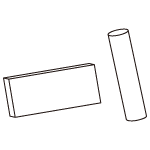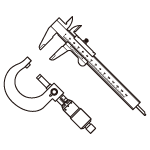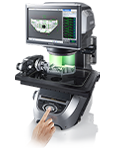Temperature and Measurement
Because an object's volume changes due to thermal expansion, its length changes with temperature fluctuations. Therefore, even if two objects have the same specifications, the lengths may vary depending on the temperature at the time of measurement. The rate of thermal expansion also differs depending on the material, as shown in the following table.
| Material | Thermal expansion coefficient × 10-6 |
|---|---|
| Aluminium | 23 |
| Brass | 17.5 |
| Polyethylene | 100 - 200 |
When measuring an object's length, it is necessary to consider the temperature conditions. The International Organization for Standardization has set the reference temperature for measurement at 20°C.
When the measurement target is brought in from a location with a different temperature, it is generally necessary to allow the target to adjust to the new temperature for at least an hour. In addition, if the temperature at the time of measurement is not 20°C, it is necessary to calculate the error and make the corresponding corrections.
Thermal expansion does not occur in just the measurement target. It also occurs in the measuring instrument. Therefore, it is necessary to maintain the reference temperature for both the measurement target and the measuring instrument.


- Room temperature
- 20°C



